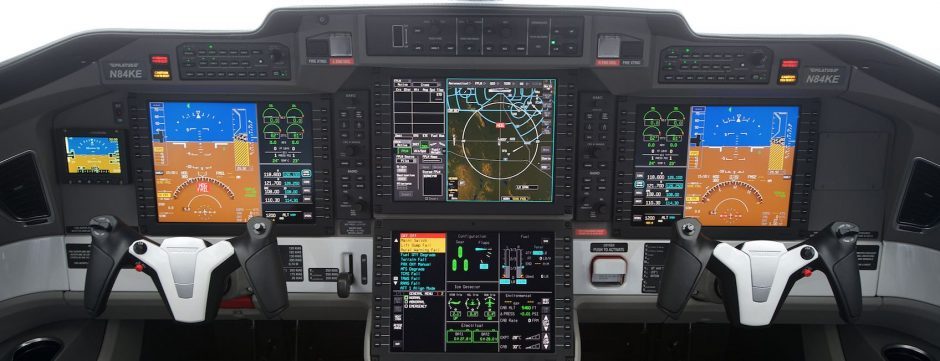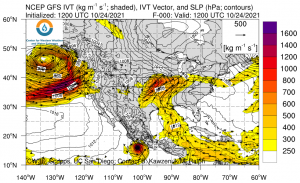The topic of Climate Change intersects with several aviation topics – weather; fuel sources; powerplant innovation (moving away from fossil fuels toward electric); and I’m sure many other topics I’ll learn about.
In 2021, throughout the world, there have been numerous extreme weather events. As I write this, further north in California, an entire town was leveled by fire. The topic of Climate Change is important to really understand in depth. I remember, while living in Ojai, that their weather was dictated by events in the Sierra Nevadas, for example.
Within the United Nations is an organization (over 200 leading scientists) called “Intergovernmental Panel on Climate Change” or IPCC. Since January 2021 they have been researching and reviewing data about the Earth’s atmosphere, oceans, forests, and weather patterns. The output is a report that offers two takeaways: 1. Scientific consensus about how climate has already changed and 2. What the rest of the century will look like. The document should inform climate policy – eg how quickly to reduce greenhouse gas emissions. The report is less about dictating to governments what should be done specifically, and more towards educating about current scientific realities and forecasts.
This is the sixth edition (Sixth Assessment Report), and the last one came out in 2013. There have been several factors escalating relatively between the 5th and this current edition.
To assist governments, they’ve devised five (5) scenarios (imaginary policy worlds):
- Countries around the world work together to develop cheap, low-carbon technologies which are made available to everyone
- Nationalism surges and governments turn inward and really focus on local energy options.
- Three other scenarios…
Note: The Paris Climate Accord agreement is to keep global warming below the 2-degree Celsius threshold, which the above scenarios would yield that outcome.
Timing of report and what’s gone into it:
- They’ve been working on this report since the last one came out
- They are working on final drafts and will release soon. The scientists have been meeting virtually, because of COVID-19.
- Looks like an update/report will be released on August 9, 2021. Talk about timing, as I’m writing this on 202100807.
Specific websites and URLs on the report(s):
- Assessment Reports of three Working Groups
- This pages gives all the details of the various groups, scope, etc
- Three Special Reports
- Refinement to the Methodology Report
- Synthesis Report of the Sixth Assessment Report
- Last of the Sixth Assessment Report/products and due for release in 2022, in time to inform the 2023 Global Stocktake by the UN Framework Convention on Climate Change.
There are many moving pieces (3 working groups and a synthesis report) within this but this is the link for what the Working Group I contribution is being considered during the “14th Session of Working Group I and 54th Session of the IPCC”. This work was done between 26 July 2021 and 6 August 2021. If they approve, then we see the report on Monday August 9th, 2021.
- Working Group I – Report: The Physical Science Basis (Scheduled 26 Jul to 6 Aug 2021)
- Note: This is the topic of focus for August 9, 2021
- Outline for WG1
- Working Group II – Report: Impacts, Adaptation and Vulnerability (Scheduled 14-18 Feb 2022 tbc)
- Working Group III – Report: Mitigation of Climate Change (Scheduled 21-25 March 2022 tbc)
- Synthesis Report (Scheduled 26-30 Sept 2022 tbc) – integrates the three Working Group reports and findings from the three cross-Working Group Special Reports (Special Report on Global Warming of 1.5 degrees C (Oct 2018); Special Report on Climate Change and Land (Aug 2019); and Special Report on the Ocean and Cryosphere in a Changing Climate (Sep 2019).
- Methodologies update – 2019 Refinement to the 2006 Guidelines on National Greenhouse Gas Inventories (May 2019).
- The location of the three Special Reports (Global Warming of 1.5 degrees; Climate change and land; Ocean and Cryosphere) can be accessed here.
Media and informational URL’s for the August 9th, 2021 event.
This is a useful summary fact sheet of the Sixth Assessment Report
Expanded details on scope of Working Groups I, II and III
- WGI: The Working Group I report will address the most updated physical understanding of the climate system and climate change, bringing together the latest advances in climate science, and combining multiple lines of evidence from paleoclimate, observations, process understanding, global and regional climate simulations. It will show how and why climate has changed to date, and the improved understanding of human influence on a wider range of climate characteristics, including extreme events. There will be a greater focus on regional information that can be used for climate risk assessments.
- WGII: Working Group II will assess the impacts of climate change, from a world-wide to a regional view of ecosystems and biodiversity, and review the implications for humans and their diverse societies, cultures and settlements. The report will consider the vulnerabilities and the capacities and limits of the natural world and of human societies to adapt to climate change. It will thereby inform adaptation and mitigation efforts to reduce climate-associated risks together with options for creating a sustainable, resilient and equitable future for all.
- WGIII: Working Group III will assess progress in limiting emissions, and the range of available mitigation options in energy and urban systems, and in sectors such as agriculture, forestry and land use, buildings, transport and industry. It will consider these in the context of sustainable development. The report will also assess the connection between short to medium-term actions and long-term emission pathways that limit global warming.
Ref
I learned of this organization by this article in NPR.


